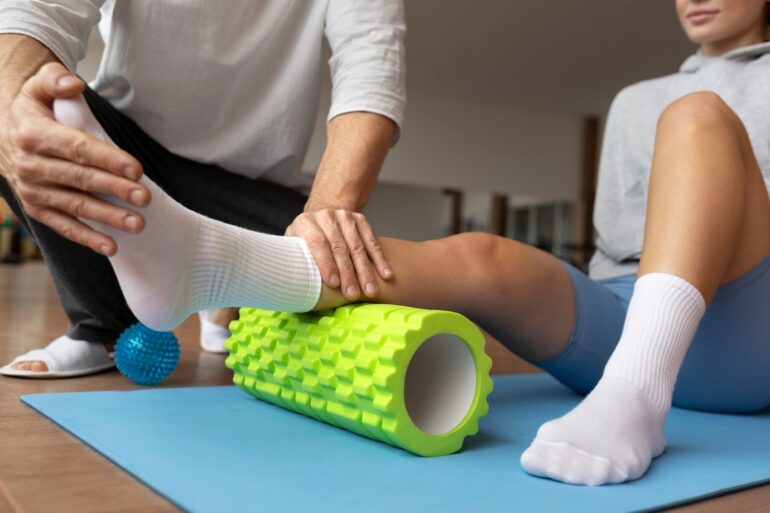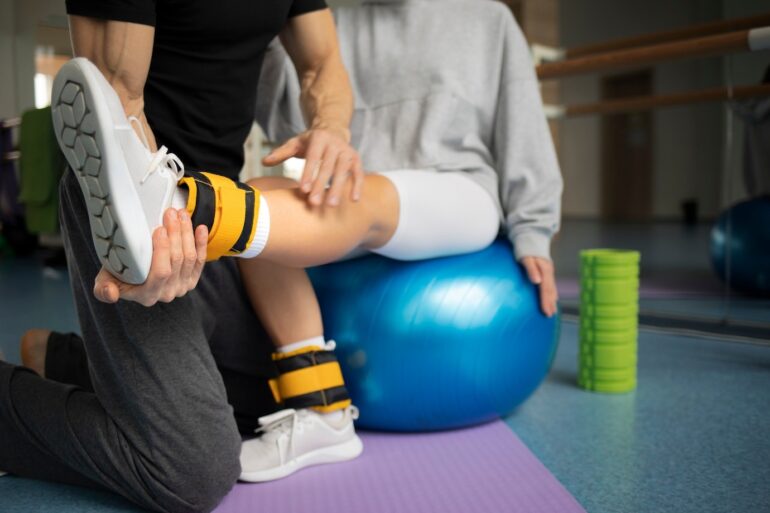In the dynamic field of Orthopedic Sports Medicine, maintaining a standard of excellence is paramount. This article navigates this complex terrain, highlighting preventative measures, exploring surgical advancements, and investigating non-surgical alternatives.
It provides a comprehensive outlook, aiming to equip readers with a profound understanding of the meticulous journey towards orthopedic excellence. Knowledge, analysis, and attention to detail are the guiding principles in this exploration of a crucial medical discipline.
Understanding Orthopedic Sports Medicine

One must grasp the fundamental principles of orthopedic sports medicine to fully comprehend its role in enhancing athletic performance and recovery.
Central to these principles are sports rehabilitation techniques and the use of orthopedic medical devices.
Sports rehabilitation techniques, including strength training, flexibility exercises, balance training, and massage therapy, among others, are designed to restore, maintain, and improve physical strength, functional abilities, and quality of life.
Orthopedic medical devices, on the other hand, such as joint implants, orthopedic braces, and prosthetic limbs, assist in correcting anatomical abnormalities and supplementing the body’s natural functions.
Consequently, a thorough understanding of these two critical components can shed light on the intricate workings of orthopedic sports medicine.
Injury Prevention Strategies
How can athletes effectively employ injury prevention strategies to safeguard their physical health and optimize performance in the field of orthopedic sports medicine?
Recognizing the Protective Gear Importance, athletes should ensure they wear suitable equipment that supports their body and reduces the risk of injury. This gear is specifically designed to shield vulnerable areas, providing a defense against potential damage.
Furthermore, athletes can reap Progressive Training Benefits by implementing a gradual increase in their activity levels. This measured approach allows the body to adapt safely to increased physical demands, minimizing the risk of overuse injuries.
Regular monitoring, appropriate rest periods, and professional advice are other key elements in a comprehensive injury prevention strategy, underscoring the importance of a multifaceted approach.
Advances in Surgical Treatments
In recent years, numerous advancements in surgical treatments have dramatically improved outcomes for athletes in the realm of orthopedic sports medicine.
Robotic assisted surgeries, driven by biomedical engineering advancements, offer unprecedented precision and control, leading to less invasive procedures and faster recovery times. This technology utilizes a robotic arm, guided by a surgeon, for pinpoint accuracy during operations.
Concurrently, biomedical engineering advancements have yielded superior prosthetics and implants, enhancing an athlete’s post-surgery return to peak performance. These high-tech devices are built to mimic the natural movement and durability of human joints, reducing the risk of subsequent injuries.
Exploring Non-Surgical Alternatives
While surgical advancements have undeniably improved orthopedic outcomes, it’s equally crucial to delve into the realm of non-surgical alternatives that offer significant benefits for athletes seeking treatment options. Exploring Alternative Therapies within this context can often provide effective, less invasive solutions.
Physical therapy, for instance, is a well-researched option that can restore function and strength without requiring a scalpel.
Holistic Approaches, which consider the whole individual rather than just the injury, are also gaining traction. These may involve nutritional guidance, meditation, or acupuncture to promote overall wellness and expedite recovery.
An analytical, detail-oriented approach to these non-surgical alternatives is necessary to determine their suitability for specific cases, helping patients navigate their options with informed confidence.
The Journey to Orthopedic Excellence

Through the lens of non-surgical alternatives, the pursuit towards orthopedic excellence involves a comprehensive, meticulous, and patient-focused approach that transcends the conventional boundaries of sports medicine.
A crucial part of this journey lies in the selection of Career Pathways and Specialization Choices, which must be made with a thorough understanding of one’s aptitude, interests, and the demands of the field.
Orthopedic sports medicine, for instance, requires a deep knowledge of sports-related injuries and their non-surgical treatments. Specialization in this area demands a nuanced understanding of patient needs, as well as cutting-edge techniques and technologies.
The path to excellence is not linear, but with dedication, professionalism, and a patient-centric approach, orthopedic practitioners can achieve superior outcomes.
Frequently Asked Questions
What Is the Average Cost of Orthopedic Sports Medicine Procedures?
The average cost of orthopedic sports medicine procedures varies significantly due to factors such as insurance coverage implications and procedure financing options. Detailed analysis is necessary to provide a more accurate cost estimation.
How Long Does It Typically Take to Recover From a Common Orthopedic Sports Injury?
Recovery duration from a common orthopedic sports injury varies, typically ranging from a few weeks to several months. Factors include injury severity, individual health, injury prevention strategies, and employed rehabilitation techniques.
Are There Any Side Effects Associated With Orthopedic Sports Medicine Treatments?
Yes, side effects can occur with orthopedic sports medicine treatments. These may include pain, infection, or adverse reactions to anesthesia. Treatment alternatives and rehabilitation techniques are often employed to manage and mitigate these potential side effects.
How Can Orthopedic Sports Medicine Improve an Athlete’s Performance?
Orthopedic sports medicine can enhance an athlete’s performance by employing injury prevention techniques and performance optimization strategies. These methods ensure athletes’ optimal physical condition and minimize the risk of injuries, leading to improved performance.
What Role Does Diet and Nutrition Play in Orthopedic Sports Medicine Recovery and Prevention?
Diet and nutrition are critical in orthopedic sports medicine for recovery and prevention. Optimal supplement selection aids in tissue repair, while the importance of hydration supports overall health and reduces injury risk.
